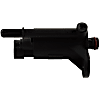{
"lazyNodes": false,
"abFitnotesFlag": false,
"abCrawlReviews": false,
"productOptionsCookie": false,
"orderDelayFlag": false,
"skipSessionCookie": false,
"covidMessage": false,
"fullTitleCookie": false,
"nrLoggerCookie": false,
"checkoutReviewCookie": false,
"productOptionSeqCookie": false,
"maintenanceFlag": false,
"bufferETACookie": false,
"multiShippingDiscountFlag": false,
"newFitmentFlag": false,
"surveyOptInFlag": false,
"crossSellFlag": false,
"skuMappingFlag": false,
"paySplitCookie": false,
"callDisableFlag": false,
"zipPaymentFlag": "u",
"hassleFreeReturn": false,
"lifetimeReplacement": false,
"cpn_off": false
}2004 Land Rover Freelander Vapor Canister Purge Solenoids
Shop Catalog
- 2004 Land Rover Freelander SE3 6 Cyl 2.5L
- 2004 Land Rover Freelander SE 6 Cyl 2.5L
- 2004 Land Rover Freelander HSE 6 Cyl 2.5L
![]() WARNING: This product can expose you to chemicals including Lead, which is known to the State of California to cause cancer and birth defects or other reproductive harm. For more information go to www.P65Warnings.ca.gov.
WARNING: This product can expose you to chemicals including Lead, which is known to the State of California to cause cancer and birth defects or other reproductive harm. For more information go to www.P65Warnings.ca.gov.
- 2004 Land Rover Freelander SE3 6 Cyl 2.5L
- 2004 Land Rover Freelander SE 6 Cyl 2.5L
- 2004 Land Rover Freelander HSE 6 Cyl 2.5L
![]() WARNING: This product can expose you to chemicals including Lead, which is known to the State of California to cause cancer and birth defects or other reproductive harm. For more information go to www.P65Warnings.ca.gov.
WARNING: This product can expose you to chemicals including Lead, which is known to the State of California to cause cancer and birth defects or other reproductive harm. For more information go to www.P65Warnings.ca.gov.
- 2004 Land Rover Freelander All Submodels All Engines
![]() WARNING: This product can expose you to chemical which is known to the State of California to cause cancer and birth defects or other reproductive harm. For more information go to www.P65Warnings.ca.gov.
WARNING: This product can expose you to chemical which is known to the State of California to cause cancer and birth defects or other reproductive harm. For more information go to www.P65Warnings.ca.gov.
Top Rated Products
Popular Products

DORMAN – OE REPLACEMENT VAPOR CANISTER PURGE SOLENOIDS
Dorman’s OE replacement vapor canister purge solenoids restore optimum siphoning of fuel vapors from your EVAP system to the engine. Since 1918, Dorman Products has supplie...

Manufactured from top quality components, this is your best option and inexpensive replacement for your rebuild, repair, and maintenance needs - an OE replacement product for your damaged or aged factory part.
Replacement - the most affordable brand name for replacement parts th...

STANDARD VAPOR CANISTER PURGE SOLENOID
Revamp your ride with the advanced design, OEM-grade quality assurance and standard-setting performance offered by Standard’s Vapor Canister Purge Solenoid. Since 1919, Standard Motor Products has engineered a f...
Product Questions & Answers
Related Parts











